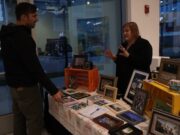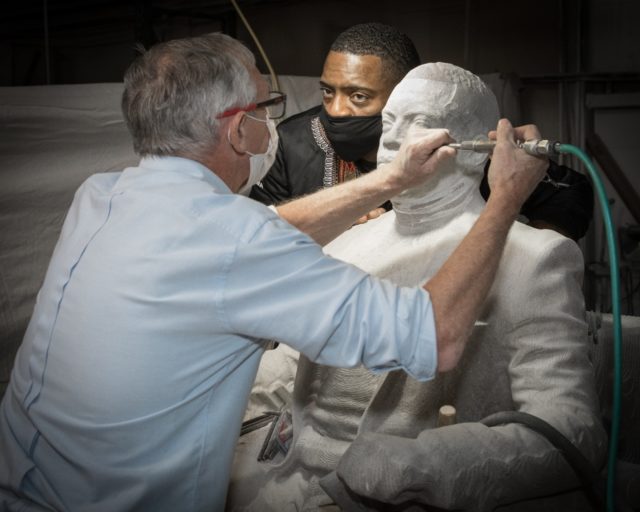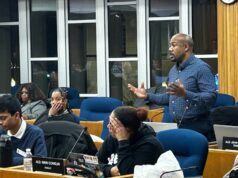The Madison Museum of Contemporary Art (MMOCA) will be unveiling a commissioned stone sculpture of Faisal Abdu’Allah, professor of printmaking and the Chazen Family Distinguished Chair in Art at the UW-Madison, on Tuesday, Feb. 22, in the MMoCA lobby in downtown Madison.
The art piece, Blu³eprint, is carved from limestone and features Abdu’Allah seated in a Belmont barber’s chair. As a barber and educator, Abdu’Allah features the barber chair as a space of learning for men like himself. Abdu’Allah spoke with Madison365 about the piece and what he hopes audiences learn from it.
“A lot of the artwork I’ve created over the years, has signs and symbols embedded in them,” said Abdu’Allah. “I always use materials and certain science as a way of encrypting things in work. The word Blueprint has the power three on top, because when you look at the word, embedded in that word, you can spell a word called Ubuntu … and Ubuntu is a Swahili word that talks about who we are as human beings. It translates to say a person is a person to other people. For me, it was really, really important to look at the holistic approach, as I’m creating this, what I would consider a very important object that’s going to be in public space. And in some way, I was using my body, a home that people are familiar with, the barber chair, to create this fitted seated figure.
“Obviously, it’s me,” adds Abdu’Allah. “But it’s almost a referencing to that question. Most people say that they are self-made, that is absolutely untrue. We are all a product of our interactions in life, whether that be through an education, whether it be through something that’s traumatic, whether it be through being exposed to love or relationship. But we’re almost like a vessel, that has all of these ingredients put in the center of it. And that creates the kind of individual who we are. I think in some ways, that piece talks about a certain collectivity, in our own evolution, as human beings just celebrate the fact that we are a product of a multitude of different influences.”
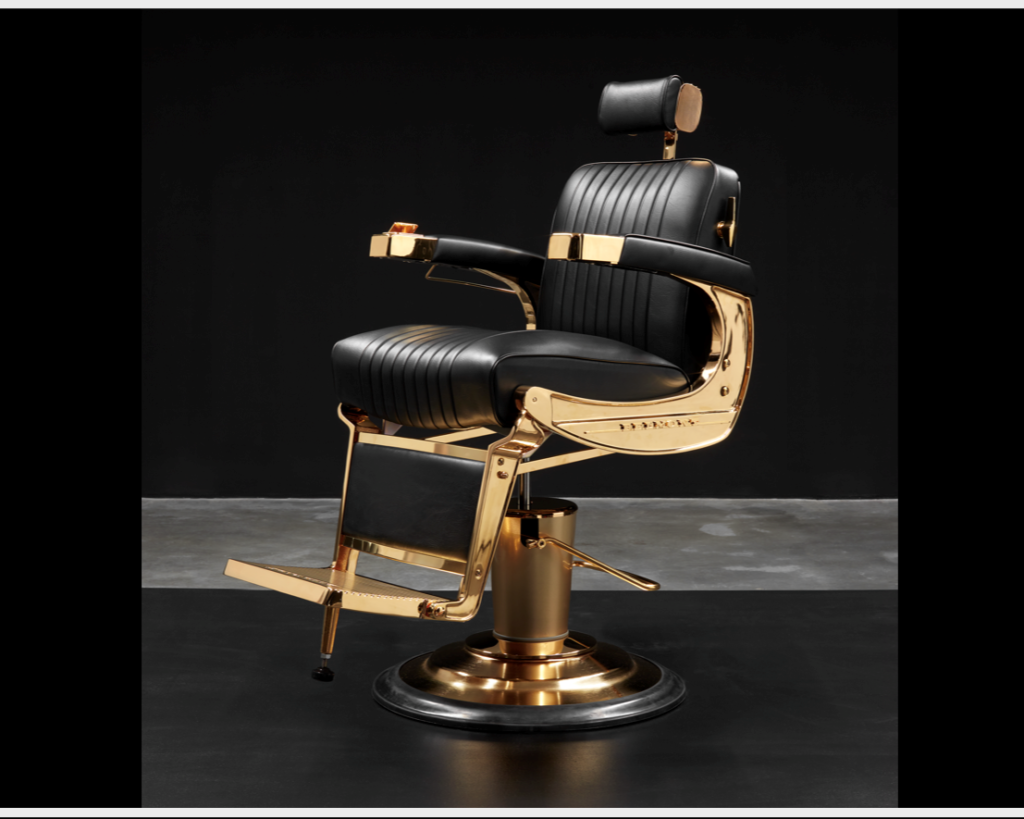
Heather Schatz, director of fine art at Quarra Stone, talked with Madison365 about the process of creating this sculpture with Abdu’Allah.
“It really, really stemmed around Faisal’s interest in going to the public space and wanting to continue a conversation that he’d been having with the students about what would a contemporary monument be,” said Schatz. “It started out very much as an idea. It has emerged into working with artists here, with handcrafters and machines. We did the first phase of the sculpture with our large-scale robots. They carved away the material from the limestone to create a basic form. Then a master craftsman named Martin Foot from Italy was here and we looked at the piece with Faisal.
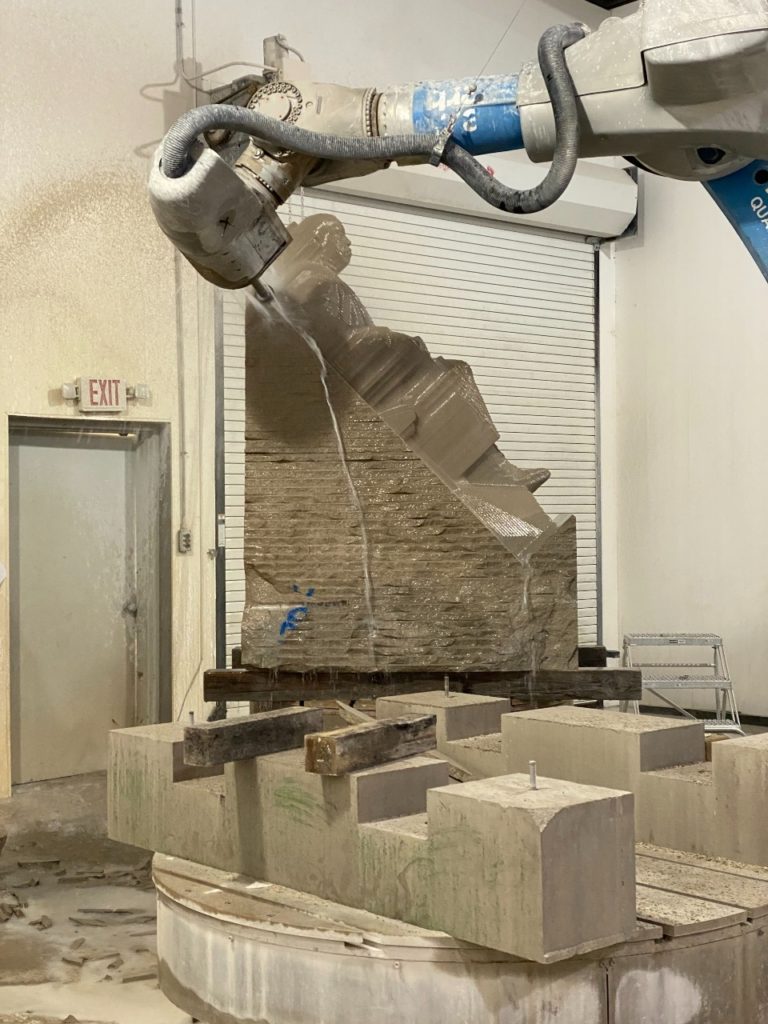
(Photo courtesy of MMoCA)
“It was determined that the face and the hands and some other elements should be crafted by this master craftsman. He carved Faisal’s details live,” Schatz continued. “It was extraordinary to take the shape and form that had derived very conceptually, through computers and through conversations and scans. Then now we had a very hand process doing those final touches. One thing probably it’s helpful to know is, even though it’s a sculpture of Faisal, he’s actually the artist.”
Abdu’Allah wants this art piece to spark conversations about the complexities of historical monuments, including Blu³eprint and the Abe Lincoln statue on top of Bascom Hill on UW-Madison’s campus. He is hoping people think about these monuments and understand the history behind them, while reflecting on the contemporary meanings of the artwork.
“My hope is that the public will spend time with the work. I would urge them to just take time into understanding the material, which is limestone. Limestone is a soft material. And it gets hard over time through weathering. There’s a philosophical reason why I chose that material,” he says. “That’s the first thing.
“The second thing is to understand that this is not a vanity project of me being the person in the stone and wants to be more memorialized in perpetuity. It’s speaking purely about one aspect of existing,” he adds. “This is just one aspect of me talking about humanity, and our shared humanity, through my own experiences of being born and raised in the UK and coming to the United States.”
Abdu’Allah is hoping Blu³eprint inspires audiences to critically think about where they consider spaces of education.
“That piece talks about this transformation, the weathering, talks about the hard to soft, talks about the way in which my new way of seeing the world has been shaped and crafted being in the U.S.,” Abdu’Allah says. “But more importantly, talking about the places and spaces for that education, to be continued, and places and spaces where that education took place.
“People will assume that it’s the university that education takes place … and I’m saying ‘No, when I was a young kid, the barber chair was a space of learning for me.’ The first institute of learning. I hope they’re able to kind of try and visit the work, revisit the work, try to get some learning about who I am, what I’m about, and just spend time with a piece and, hopefully, they’ll be able to see bits of themselves in it.”
To learn more about Blu³eprint and the Madison Museum of Contemporary Art, click here.






